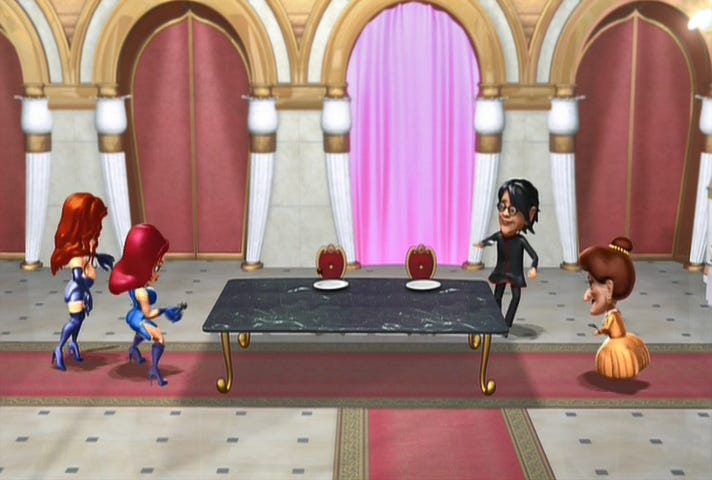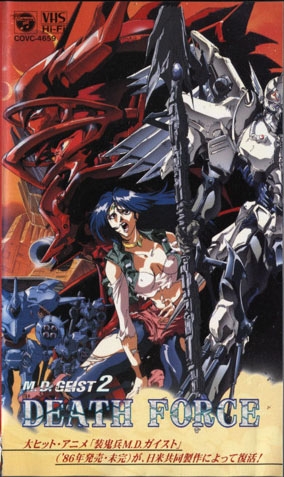 |
| From https://cdn-2.cinemaparadiso.co.uk/ 040801101841_l.jpg |
Director: Shunji Ōga
Screenplay: Noboru Shiroyama
Voice Cast: Kenyuu Horiuchi as
Amon; Banjou Ginga as Ekuna; Ichirō Nagai as Mabo; Katsuji Mori as Alcan;
Kiyoshi Kobayashi as Valhiss; Koji Toya as Ho; Kouji Totani as Ho; Mugihito as
Gaius
Viewed in Japanese with English Subtitles
Synopsis: In a world far alien to ours, Amon is a wandering warrior
who witnessed his mother being killed by marauding soldiers as a child. His
quest for vengeance leads him to the army of the Valhiss, led by the evil Emperor
(of the same name) whose army have kidnapped the princess of another nation of
in hope of knowing the location of a city of gold.
 |
| From http://cartoonresearch.com/wp-content/ uploads/2016/04/AmonSaga25.jpg |
In context of anime history, Amon Saga is pretty standard of its era, a piece probably more distinct in its original context as whilst fantasy stories have existed for a long while in anime, I'd obviously argue it's grown as a popular trend for television shows built off the back of their forefathers decades earlier. In terms of Manga Entertainment's The Collection DVD releases, it was a surprise. First because this actually had a Japanese dub track with subtitles, the one release with its own aesthetic style to the DVD menu; it's the kind of thing that'd cause the layperson to roll their eyes in disbelief of coveting an interactive screen on a video disc, but there's just the surprise to actually be able to hear the original Japanese cast rather than a potentially awful English dub only. It's also a production that, despite its averageness in the history of even just fantasy anime, was also a stand-out for just being watchable among some of the really generic material I've put up with within The Collection.
It had an immense advantage that,
whilst it had to be interpreted out of his hands into a more conventional art
style for the era, one of the most idiosyncratic figures from illustrative art
design worked as a character and conceptual designer on the project, alongside
being a main creator of the original premise, someone by the name of Yoshitaka Amano. Starting in the late
sixties, working on anime series like Speed Racer when he was only a teenager, Amano has effectively transcended pop
culture to become an artist by itself as a career, one which has left a mark in
pop culture as he had a hand in the illustrations for the seminal Vampire Hunter D light novels and the Final Fantasy videogame series,
alongside having enough of a reputation to work with the likes of Neil Gaiman in the West, created an
illustrative adaptation of Wolfgang
Amadeus Mozart's The Magic Flute,
and live out a career where his work is shown in galleries.
 |
| From https://66.media.tumblr.com/ebf678dfb6db8bad024ccc5cba16fe05/ tumblr_ou819h6UUi1rhvtj2o4_500.png |
And as his work attests to, he is an incredible illustrator who justified the acclaim, someone who is imaginative which means even a semblance of involvement with Amon Saga is probably where the good visual ideas, rather than the generic ones, probably came from which decorate the conventional fantasy tropes. It's clear from the get-go, with some knowledge of Amano's style, that he didn't necessarily have a great deal of influence on this obscurer anime OVA, more so as he had worked by this point directly with Mamoru Oshii on Angel's Egg (1985), the only collaboration in anime where the art looks like his illustrations and is sumptuous as a result.
Arguably, the real detraction
from Amon Saga is that it's
conventional - between the archetype of the fair princess to be rescued to the
tough side kick who, introduced in a bar full of scum and villainy shows a
heart of gold after he fights Amon, it all plays out as you'd expect from the
premise. This does raise the question whether Amon Saga is actually any good - in comparison between this
interesting creator behind the production and the conventional storytelling,
ultimately what little of Amano's original ideas appear onscreen win even in
spite of this issue but it has to be considered that the material is average or
just fun at least, nothing more.
 |
| From http://www.the-unknown-movies.com/ unknownmovies/pictures/amon3.jpg |
Amon Saga, thankfully, has the creativity of Amano for its production so that even if this is the case, there's been enough here for me to appreciate hidden underneath it all and emphasising the stranger story it could've been. Stranger and more vivid in what does appear to, merely starting with having the villains fly around on dragons like horses or the protagonists being abruptly attacked by werewolves in the woodlands without context even for a fantasy world. Then you have to content with the main evil emperor looking like a giant golem robot in his full costume, whose entire empire if a moving landmass on the back of a giant turtle which travels around the world ransacking the local populaces. The anime even throws in an actual golem, a golden knight, who helps the heroes out briefly A facsimile of the elegance of Amano's work, which isn't perfect, what you get at least lets the curious touches be felt, all baring in mind it is within a conventional fantasy which has clearly defined villains and heroes.
Not surprisingly, the main hero
is a blank next to everyone else, surrounded by funnier sidekicks and whose
briefly witnessed mentor has a surprisingly similar appearance to the
protagonist D from the Vampire Hunter D
franchise, unpleased by his own decision to even train Amon in the first place.
The evil minions also has a scene stealer in their diminutive evil wizard,
whose eyes distort into a bird's when he makes an incantation, the sorcerers
versus magician fight with him against three pits magical snakes versus magical
rings a step above Amon's own final fight despite being off at the entrance of
the city of gold. There's also the odd and hilarious fact that, whilst he is
our protagonist and does prove himself in a battle by numerous mercenaries to
climb up one of nine rope ladders which turns into a fatal battle royal, he has
a living deux ex machina who is a lizardman archer, someone who saves his
backside twice even in the climax out of nowhere. Moments and details like this
are utterly ridiculous, but having feasted on some many anime productions like
this particular, I am able to find a lot to still admire in Amon Saga even if I suggest caution
except to someone who wants to dig into obscure fantasy anime before viewing
this one.
 |
| From https://66.media.tumblr.com/b3ccc2d730c5c45a5656bcdbc 26bb8c9/tumblr_ou81djkSSZ1rhvtj2o5_500.png |












